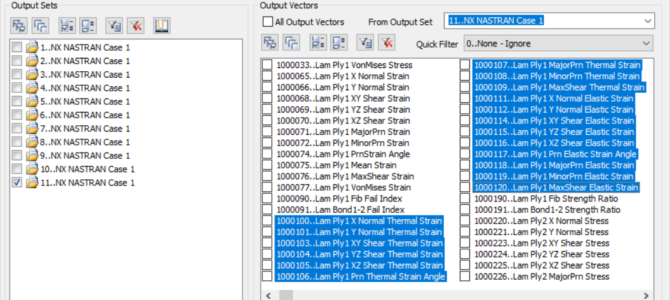A somewhat confusing situation can occur when looking at the failure index of composite laminates with thermal loading. You may look at ply by ply strain results and compare that to the ply failure strain you provided on the laminate property entry (PCOMP). For a failure criteria such as Max Strain, the Failure Index is calculated:
Failure Index = Ply strain / Limit strain
When the Nastran-computed Failure Index is greater than 1, failure is predicted in the ply (and with first-ply failure theory, the laminate as well). You look at the same strain output that you normally do (e.g Lam Ply1 X Normal Strain), but the Failure Index is higher than as calculated by hand. Something doesn’t add up, so what gives?
What’s important here is to consider the impact of thermal loading. The strain due to thermal expansion, ε_thermal, is calculated:
ε_thermal = α x ΔT
This is calculated by Nastran. It is not necessarily the strain that results in the ply from the loading when you consider boundary conditions, layup, and other influences that must be solved for. That value is called the elastic strain, ε_elastic. The NX Nastran documentation is a little inconsistent in labeling, but I believe the terms elastic and mechanical are interchangeable. What’s happening is that the reported strain for that ply is the total strain, ε_thermal + ε_elastic1. A situation can develop where the ply is constrained against expansion. This could in theory be due to SPC constraints around it’s boundary, or if its sandwiched between plys of substantially different CTE. In these cases, the thermal strain (positive) is equal to the elastic strain (negative), and they essentially cancel each other out. Then your hand calculation that uses total strain is quite wrong.
Thankfully, Siemens has added a method to retrieve elastic ply strain as of NX Nastran v10.2 (see PDF of Release Guide here). We can clarify the previous calculation of Failure Index for the Max Strain failure criteria for composites with the following equation:
Failure Index = Ply elastic strain / Limit strain
To retrieve elastic strains in Femap version 11.4.2 and earlier, you’ll have to manually edit the Master Requests and Conditions via the End Text button shown below, which is a part of the standard analysis edit menu dialogs (v12.0 is expected to have extra entries in the Output Requests analysis dialog, so no manual deck edits will be necessary):
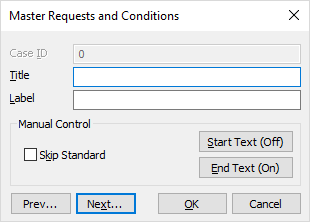
Enter the new case control commands THSTRN and ELSTRN to recover thermal and elastic ply strains, respectively. Note this only works for 2D laminate elements.
THSTRN(PLOT) = ALL
ELSTRN(PLOT) = ALL
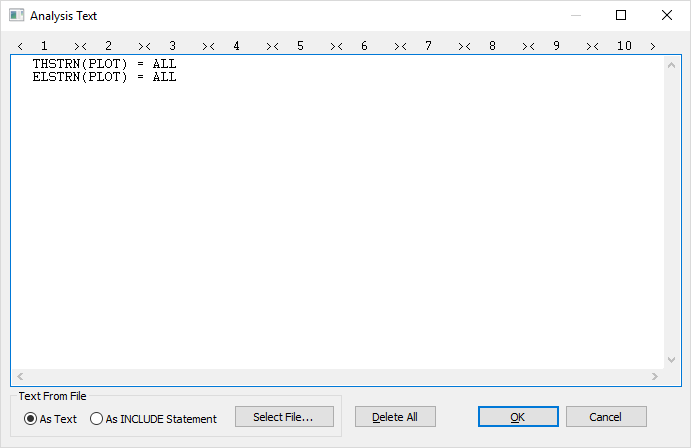
Confirm with preview of analysis (right click on the Analysis, select preview). The two lines we added as Case Control End Text show up just before the standard BEGIN BULK line.
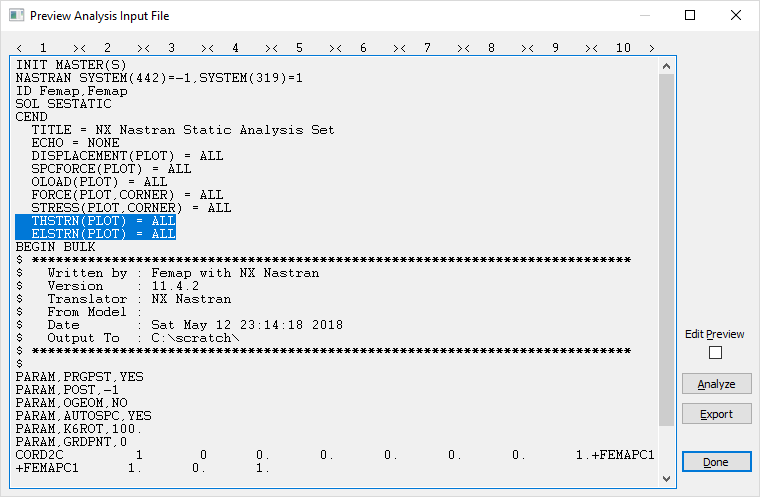
You will then notice the additional output vectors recovered in Femap:
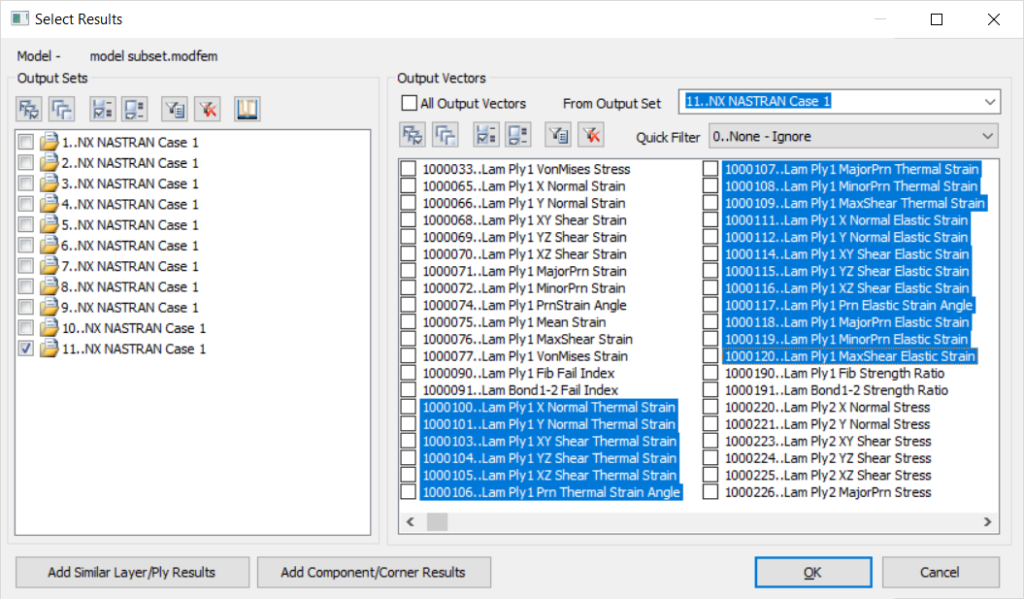
One detail to remember is that ply by ply results for PCOMPs are delivered in the ply fiber direction. This is set by the angle of each ply the user defines on the PCOMP card. Nastran transforms the element midplane strain and curvature into ply strain oriented in the ply 1 (0°) and 2 (90°) direction. The use of “X” or “Y” in the description is a bit misleading. I’d prefer Femap use a “1” or “2” label to denote ply/lamina longitudinal and transverse directions, as is done in the f06 printed output. Here’s an example of that:
E L A S T I C S T R A I N S I N L A Y E R E D C O M P O S I T E E L E M E N T S ( Q U A D 4 ) ELEMENT PLY STRAINS IN FIBER AND MATRIX DIRECTIONS INTER-LAMINAR STRAINS PRINCIPAL STRAINS (ZERO SHEAR) MAX ID ID NORMAL-1 NORMAL-2 SHEAR-12 SHEAR XZ-MAT SHEAR YZ-MAT ANGLE MAJOR MINOR SHEAR 42898 1 -1.90651E-06 3.98517E-05 7.77519E-05 -3.23391E-07 -8.78694E-07 59.12 6.31005E-05 -2.51554E-05 8.82559E-05
References:
1 – NX Nastran 11 Quick Reference Guide, pg 4-22, “In a linear static analysis, the strain output are total strain – mechanical strain plus thermal strain”.
2 – Siemens TAN 4548. Find in GTAC database.
3 – NX Nastran Problem Report 6549455. Find in GTAC database.
